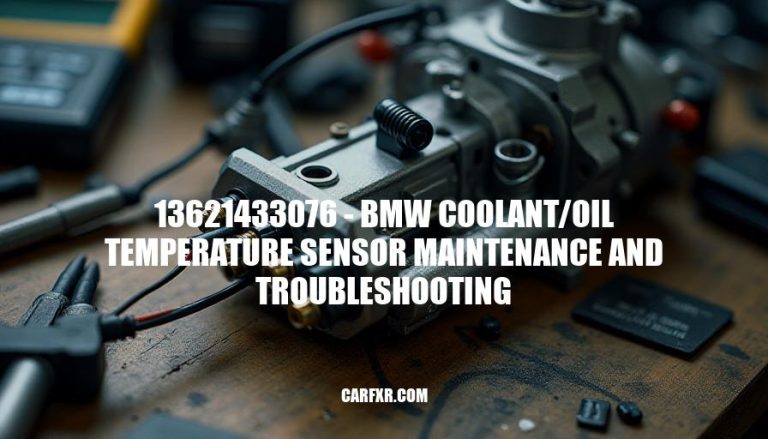
The BMW Part coolant / oil temperature sensor 13621433076 is a super important part in BMW cars. It checks the temperature of the engine’s coolant or oil and sends that info to the car’s computer. The computer uses this data to make sure the car runs smoothly by adjusting things like the cooling system, fuel mix, and spark timing.
This helps prevent the engine from getting too hot, which can cause big problems.
The BMW Part coolant / oil temperature sensor 13621433076 is a crucial component in monitoring and regulating the engine’s performance. This sensor functions by measuring the temperature of the coolant or oil and sending this data to the engine control unit (ECU). The ECU then uses this information to adjust the cooling system performance, fuel and ignition mapping, and other critical engine operations.
Technical specifications of this sensor include its compatibility with various BMW models such as the 1 Series, 2 Series, 3 Series, and more.
It is designed to fit in different locations depending on the model, such as the coolant hose, thermostat housing, cylinder head, oil filter housing, or engine block. The sensor operates as a thermistor, meaning its electrical resistance changes with temperature variations, allowing it to provide accurate temperature readings.
Maintaining accurate coolant and oil temperature readings is essential for optimal engine performance. Incorrect temperature data can lead to poor engine performance, reduced fuel economy, and potential engine damage.
The sensor ensures that the engine operates within the ideal temperature range, preventing overheating and ensuring efficient combustion.
In summary, the BMW Part coolant / oil temperature sensor 13621433076 plays a vital role in maintaining the engine’s health and performance by providing precise temperature readings to the ECU.
The BMW Part coolant/oil temperature sensor 13621433076 is a crucial component that monitors and regulates engine performance by measuring coolant or oil temperature and sending data to the ECU.


